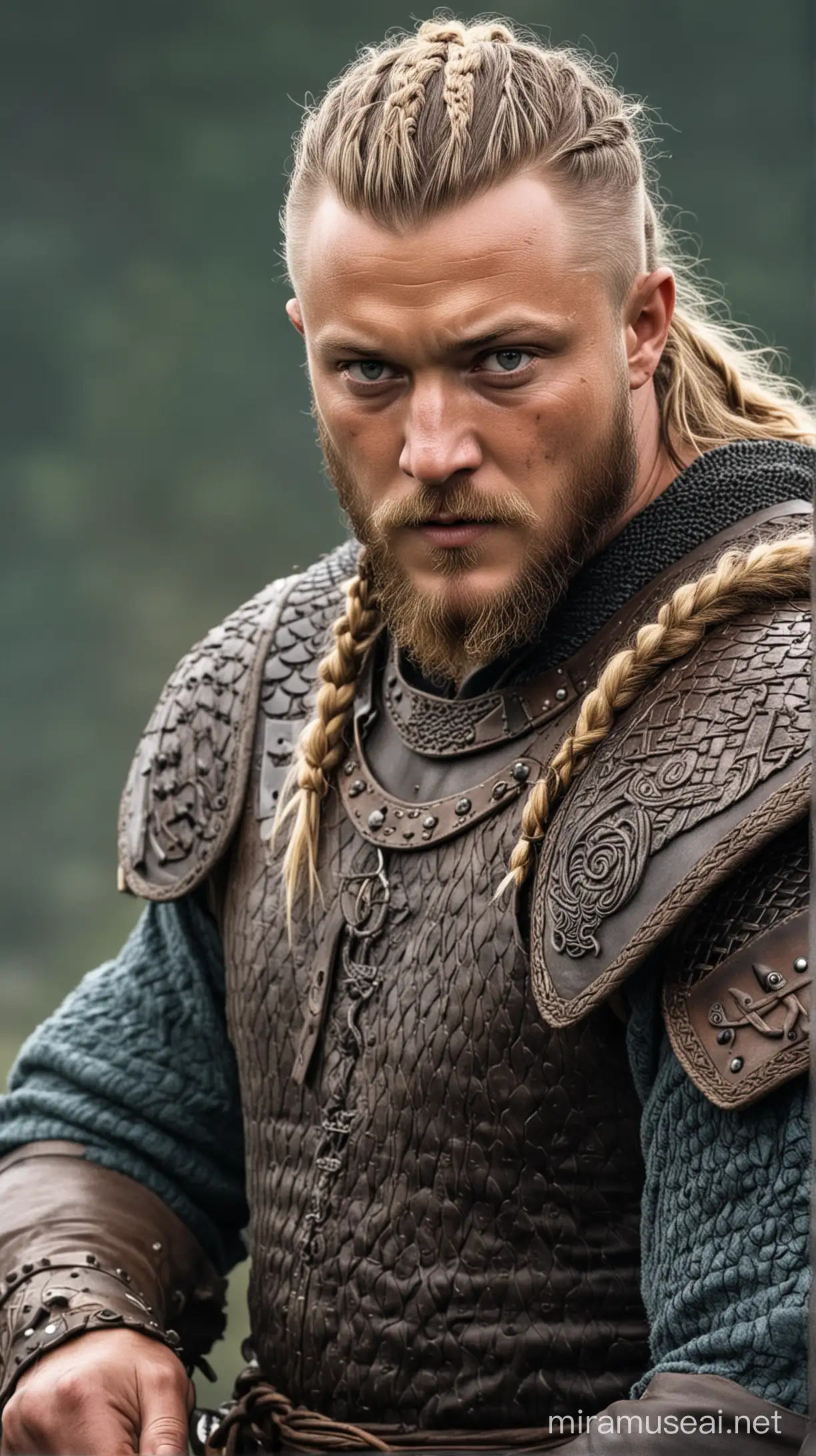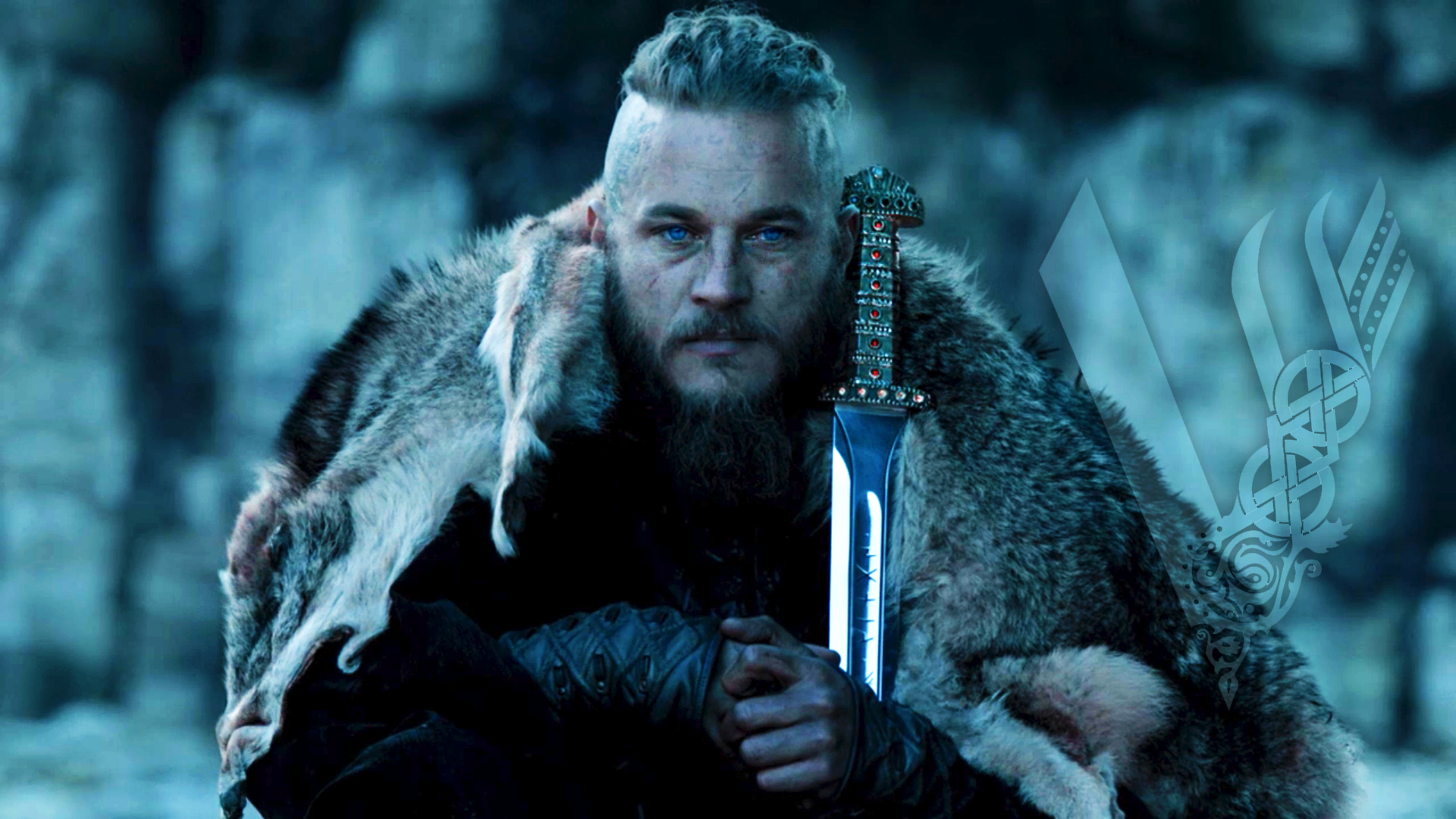Who Was Ragnar Lothbrok? The Viking Legend & History
Was Ragnar Lothbrok a real historical figure or merely a figment of Norse sagas? The enduring fascination with Ragnar Lothbrok stems from the potent blend of historical context, legendary embellishment, and the inherent human desire for larger-than-life heroes.
The question of Ragnar Lothbrok's historicity has been debated among historians and scholars for centuries. While concrete evidence firmly placing him as a singular, verifiable individual remains elusive, his name and exploits permeate Norse mythology and medieval literature. These narratives, passed down through generations, paint a vivid picture of a Viking warrior, a fearless raider, and a king whose influence shaped the course of early medieval Europe. Whether he was a composite character, an amalgamation of several historical figures, or a wholly fictional creation, Ragnar Lothbrok undeniably embodies the spirit of the Viking age and continues to capture the imagination of audiences worldwide.
| Ragnar Lothbrok: Biographical and Professional Information | |
|---|---|
| Full Name | Ragnar Lothbrok (also spelled Ragnar Lodbrok) |
| Flourished | 9th Century (approximate) |
| Possible Father | King Sigurd Ring of Denmark (as depicted in some sagas) |
| Occupation | Viking Warrior, Raider, King (likely of a region within Scandinavia) |
| Known For |
|
| Character Traits (as depicted in sagas) | Handsome, martially adept, good to his men, cruel to his enemies, a top warrior. |
| Historical Context | Viking Age (late 8th to late 11th centuries), a period of Scandinavian expansion and raiding across Europe. |
| Legacy | A legendary figure in Norse mythology and medieval history, symbolizing the Viking spirit of adventure and conquest. His stories have been adapted and reinterpreted in various forms of media, including literature, film, and television. |
| Reference Link | |
| Encyclopdia Britannica - Ragnar Lothbrok |
The sagas paint a compelling portrait of Ragnar as more than just a brute warrior. He is often depicted as cunning, resourceful, and possessing a strategic mind. His raids on England and France, whether historically accurate or embellished through storytelling, highlight the Vikings' audacity and their ability to challenge the established powers of the time. These accounts, while potentially exaggerated, reflect the very real impact that Scandinavian raiders had on the political and social landscape of Europe during the Viking Age.
The sagas, while offering a glimpse into the potential character and exploits of Ragnar, also serve as repositories of Norse cultural values and beliefs. Concepts like honor, courage, loyalty, and the acceptance of fate are recurring themes within these narratives. Ragnar's actions and decisions, as portrayed in the sagas, often embody these virtues, solidifying his status as a hero within the Norse worldview. These stories would have been used to teach, inspire, and reinforce the cultural norms of the Viking society.
One of the most prominent features of Ragnar's saga is his lineage, often tracing back to King Sigurd Ring of Denmark. This connection, whether historically accurate or not, serves to elevate Ragnar's status and legitimize his claim to power. Royal lineage was a crucial aspect of Norse society, and associating Ragnar with a recognized king would have enhanced his reputation and influence. This association underscores the importance of kinship and ancestry in shaping the political landscape of the Viking age.
The Saga of the Volsungs with the Saga of Ragnar Lothbrok provides detailed accounts of Ragnar's upbringing, highlighting his physical prowess and martial skills. The text describes him as growing "up to be handsome and martially adept, good to his men and cruel to his enemies, and a top warrior whom few could equal." This portrayal underscores the importance of physical strength, combat skills, and leadership qualities within the Viking society. These were the attributes that defined a successful warrior and leader, and Ragnar embodies these traits to an exceptional degree.
- Best Sexy Movies Streaming Now Our Top Steamy Picks
- Hyungry Temporary Replacement Ep 3 Why Its A Mustsee More
The popularity of the television series "Vikings," which ran until 2020, further cemented Ragnar Lothbrok's place in popular culture. The series, starring Travis Fimmel as Ragnar, presented a fictionalized yet compelling version of the legendary Viking, capturing the drama, intrigue, and brutality of the era. While not entirely historically accurate, the series introduced a new generation to the figure of Ragnar Lothbrok and sparked renewed interest in Viking history and mythology.
It is important to acknowledge that the "Vikings" series takes creative liberties with historical accuracy. The characters, timelines, and events are often altered to enhance the dramatic narrative. While the series offers a visually stunning and entertaining portrayal of the Viking age, it should be viewed as a work of fiction rather than a definitive historical account. However, its impact on popularizing Viking history and culture cannot be denied.
Ragnar Lothbrok's influence extends beyond the sagas and popular culture; his name resonates within medieval European literature. Chroniclers and writers of the time, even if they did not possess precise historical information, were aware of the Viking raids and the impact they had on their societies. Ragnar, as a prominent figure in Viking lore, became a symbol of the Viking threat, appearing in various accounts and narratives of the period. These references, although sometimes fragmented and unreliable, contribute to the overall picture of Ragnar Lothbrok as a significant, albeit enigmatic, figure in medieval history.
The very spelling of Ragnar's name, appearing both as Lothbrok and Lodbrok, reflects the fluidity and variations present in historical records and oral traditions. The inconsistencies in spelling and pronunciation are a common feature of medieval texts, particularly when dealing with figures whose stories were primarily transmitted orally before being written down. These variations highlight the challenges faced by historians attempting to reconstruct the past from fragmented and sometimes contradictory sources.
Revered as a hero and a fearsome warrior, Ragnar's name echoes through the annals of Norse mythology and medieval history. He represents the quintessential Viking, embodying the courage, ambition, and ruthlessness that defined the era. Whether he was a single individual or a composite figure, his legacy continues to inspire and captivate, ensuring his place as one of the most enduring figures in Viking history. His stories serve as a window into the Viking worldview, offering insights into their values, beliefs, and their impact on the course of European history.
The Bachelor of Arts thesis from Brandeis University in 2015 likely explores aspects of Ragnar Lothbrok's legend, potentially delving into the historical context, literary representations, and cultural significance of the figure. Academic research on Ragnar Lothbrok often examines the sources available, analyzing the sagas, chronicles, and other historical texts to separate fact from fiction and to understand the evolution of his legend over time.
From the late eighth to the late eleventh centuries, nearly the entirety of Europe was held at the mercy of Scandinavian raiders. This period, known as the Viking Age, witnessed widespread Viking activity, including raids, trade, and settlement. Ragnar Lothbrok, as a prominent figure in Viking lore, is often associated with this era of Scandinavian expansion and conquest. His supposed raids on England and France are indicative of the Vikings' reach and their ability to challenge the established powers of the time.
It is also crucial to acknowledge the inherent biases present in historical sources, particularly those written by the victims of Viking raids. These accounts often portray the Vikings as savage barbarians, emphasizing their brutality and destructiveness. While Viking raids certainly caused suffering and disruption, it is important to recognize that these accounts may not provide a complete or objective picture of Viking society. Understanding the biases present in historical sources is essential for a balanced and nuanced understanding of the Viking Age.
The stories surrounding Ragnar Lothbrok offer valuable insights into the Viking worldview and their understanding of concepts like fate, honor, and heroism. In many sagas, characters are depicted as accepting their destiny, even if it leads to their demise. This fatalistic outlook is a recurring theme in Norse mythology and is often reflected in the actions and decisions of Viking warriors like Ragnar. This acceptance of fate underscores the importance of courage and resilience in the face of adversity.
The exploration of Ragnar Lothbrok's legend requires a critical approach, carefully evaluating the available evidence and recognizing the limitations of the historical record. While it may be impossible to definitively prove or disprove his existence as a singular, historical individual, his enduring presence in Norse mythology and medieval literature speaks to his significance as a cultural icon. Ragnar Lothbrok represents the Viking spirit of adventure, conquest, and resilience, and his stories continue to fascinate and inspire audiences across the globe.
Ultimately, Ragnar Lothbrok remains an enigma, a figure shrouded in legend and subject to ongoing debate. The challenge for historians and scholars lies in disentangling the historical realities from the mythical embellishments, to understand the cultural and societal forces that shaped his legend. Whether he was a real historical figure or a composite character, Ragnar Lothbrok serves as a powerful symbol of the Viking Age and continues to capture the imagination of audiences worldwide.
His legacy lives on, not only in historical texts and academic research, but also in popular culture, ensuring that the name of Ragnar Lothbrok will continue to be associated with the Viking spirit for generations to come. The enduring fascination with his story underscores the timeless appeal of heroic narratives and the human desire to connect with the past, even when the lines between fact and fiction become blurred.
The absence of definitive proof regarding Ragnar Lothbrok's existence as a single, verifiable historical figure should not diminish his importance as a cultural symbol. He embodies the values and aspirations of the Viking Age, representing the courage, ambition, and resilience of the Scandinavian people who left an indelible mark on European history. His story, whether rooted in fact or fiction, serves as a reminder of the complex and fascinating world of the Vikings and their enduring legacy.
The study of Ragnar Lothbrok's legend provides a unique opportunity to explore the intersection of history, mythology, and literature. By examining the various sources that mention him, including sagas, chronicles, and medieval texts, scholars can gain a deeper understanding of the cultural and societal forces that shaped his image. This interdisciplinary approach allows for a more nuanced and comprehensive understanding of the Viking Age and its impact on European history.
The continued interest in Ragnar Lothbrok also highlights the power of storytelling to shape our understanding of the past. The sagas, passed down through generations, served as a means of preserving cultural memory and transmitting values. While these narratives may not always be historically accurate, they offer valuable insights into the beliefs, attitudes, and worldview of the Viking people. The stories of Ragnar Lothbrok, in particular, have resonated with audiences for centuries, solidifying his place as a legendary figure in Norse mythology.
In conclusion, while the historical existence of Ragnar Lothbrok as a singular, verifiable individual remains uncertain, his enduring presence in Norse mythology and medieval literature is undeniable. He represents the quintessential Viking warrior, embodying the courage, ambition, and ruthlessness that defined the era. Whether he was a real historical figure or a composite character, his legacy continues to inspire and captivate, ensuring his place as one of the most enduring figures in Viking history. His stories serve as a window into the Viking worldview, offering insights into their values, beliefs, and their impact on the course of European history. The ongoing debate surrounding his historicity only adds to the mystique and allure of this legendary figure.
- Hyungry Temporary Replacement Ep 3 The Buzz What To Know
- Steamy Movies Sexy Videos Trending Now Dont Miss Out

Ragnar Lothbrok The Legendary Viking King and His Lasting Legacy

Ragnar Lothbrok The Legendary Viking Warrior Who Changed History

Ragnar Lothbrok The Legendary Viking Warrior Who Changed History